Augmented reality (AR) is one of the hottest technological trends making waves in the software industry. This technology has received maximum attention and focus with the release of optical, head-mounted displays and products such as Google Glass. Augmented reality is a technology that utilizes recognition algorithms based on computer vision to augment graphics, sound, video, and other sensor-based inputs over the real-world objects, using the camera of the user's device. It is a great way to incorporate virtual elements into the user's real world environment.
Augmented reality is a fast growing technology. The AR headset sales were projected to reach $1.2 billion by the end of 2017 and the AR market is estimated to be worth $90 billion by the year 2020. AR helps users to experience a completely different, interactive world, which is a combination of the real and virtual world, created by superimposing virtual information in the user's field of view. This technology is not just limited to computers and mobile phones, but can also be used with various other devices, which lets the user experience a new augmented world.
Brief History of AR
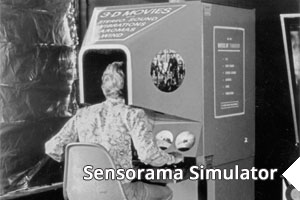
The history of AR can be traced back to the 1950s and 60s, when a filmmaker, Morton Heilig created the first patented device called "Sensorama Simulator". This device provided users with a view of the streets of Brooklyn and a feeling as if they were riding a motorcycle down those streets. It used visual images, scents, fans, sounds, and even vibrations of the bike to provide the user with a real sensation of riding a bike. Sadly, he was unable to get the necessary financial backing and couldn't take his experimental project forward.
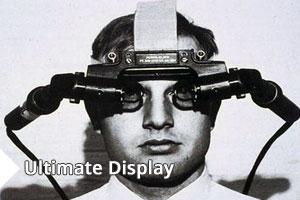
However, in the year 1968, a Harvard professor, Ivan Sutherland, came up with the world's first head mounted AR device. Named as the "Ultimate Display", this device would display a simple wireframe room shown through a head mounted binocular. The user's perspective of the room would change depending on the head and vision tracking.
After the early developments, the real work in the field of AR only sped up in the late 90s and 2000s. Major tech companies started showing interest and exploring this technology and have now come out with products to support them. In 2013 Google came up with its new device, Google Glass, which is a head-mounted display and resembles a pair of glasses. This was followed by Microsoft's HoloLens, which is an AR headset that merges computer images with the real world around you.
How Can AR Help Designers and Engineers?
- Create life-like designs - One of the main advantages of AR for the designers and engineers is its ability to design and visualize an architectural plan and view it as it is supposed to appear in the real world. Augmented reality in designing is proving to be a boon to the engineers and designers. Using this technology, a real-world target can be used to place the augmented 3D data correctly over a real-time image.
- Multi-disciplinary Usage - AR can be used in almost every stage of the designing and manufacturing, right from the concept phase to the manufacturing phase. Augmented reality in engineering is being widely used by designers across the globe, as assembly examples, quality control information, and the process steps can be superimposed over the actual work environment. Besides, it also provides detailed information on the maintenance procedures by directly superimposing the overlay on the part or the entire machine.
- Create Flawless Workable Model - Engineers and designers around the world use AR, mostly in the design phase, as it allows them to visualize the product even before it is manufactured. This ensures that the designing takes place under exact conditions in which the product will operate in the future. Therefore, using AR allows the engineers to be aware of the surroundings and space restrictions while designing and create a superior, flawless model.
- Marketing - AR can also be used in marketing a design or a product by showcasing different specifications, configurations, and explaining how the product will operate in the client's settings. Furthermore, AR also helps architects assure clients that the project is going on as schedule.
- Viewing AR using a tablet or a smartphone - Recent technological developments have increased the usability of AR for the engineering and designing community by providing an additional option for viewing AR using a tablet or a smartphone. Another major AR advancement is the Head-mounted Display (HMD), which can be easily modified to utilize see-through glasses or goggles with the capability to project images over what you see in the real world. Some of the most popular HMDs, which are useful for designers and engineers, are listed below -
-
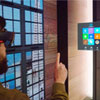
Microsoft HoloLens
This is a self-contained holographic computer, which enables the users to engage with the digital content and interact with the high-definition holograms in the world around them.
-
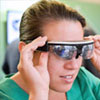
ODG R-7 Smartglasses
This is one of the most advanced platforms, in the AR domain. This is specifically designed for enhanced AR head-worn experiences. Being an untethered, fully integrated platform with 3D displays, this wearable computer of tomorrow is of great help to enterprises and industrial customers.
-
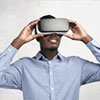
Oculus Rift
This virtual reality headset provides a wide, immersive field of view and incredible visual fidelity using state-of-the-art optics and displays.
Industries & Verticals Which Can Benefit from Augmented Reality
With the increase in the AR usage, the revenue of the AR market is all set to break its records. With billions of dollars being invested by major tech giants, this technology is surely going to change the way different industries operate. Some of the industries which can greatly benefit from AR include -
- Art
- Archaeology
- Architecture
- Medical
- Navigation
- Sports
- Television
- Military
- Gaming
- Fashion
- Education
- Commerce
- Manufacturing
- Film
Software that Supports AR
With the popularity of AR devices and content increasing with every passing day, the number of users for this technology is bound to grow exponentially. There are numerous software that support the development of various AR applications. Some of the most popular software that help developers to create useful augmented reality applications include -
Choose Flatworld Solutions to Avail World-class Engineering Services
At Flatworld Solutions, we have a vast industry experience of serving global clients. Being in the industry for over 22 years, we have the infrastructure and resources to provide world class engineering services. In our efforts to help our clients reap maximum business benefits by partnering with us, we ensure that all our services are highly efficient and extremely affordable. Besides, we have a team of well-trained and highly experienced engineers who are capable of leveraging the latest tools and technology to provide you with the best possible engineering solutions. We understand very well how the latest technologies such as AR in engineering and AR in designing can be utilized and help companies to reap the benefits.
We provide an array of engineering services including mechanical engineering, structural engineering, architectural engineering, civil engineering, and electrical engineering. Serving numerous businesses worldwide, we understand the importance of maintaining business continuity, hence, we have multiple delivery centers across the world to ensure that your projects get completed on time, every time. If you are looking for a reliable, accurate, efficient, and cost-effective engineering service provider, then you have come to the right place.
Get in touch with us today!
Contact UsAvail best-in-class services at affordable rates
Our Customers





Key Differentiators
Case Studies
-
Flatworld Solutions provided customized CNC programming using MasterCAM
-
Flatworld Provided CFD Simulation Services to a Leading HVAC Products Manufacturer
-
Flatworld Solutions Offered Mechanical Instrument Drafting and Detailing Services to an Engineering Consultant
-
Flatworld Solutions Offered US Client with 2D to 3D Mechanical Legacy Drawing Conversion
-
Flatworld Solutions Provided Reverse Engineering of Machine Parts to a Client
Join the growth phase at Flatworld Solutions as a Partner
Service distributorship and Marketing partner roles are available in select countries. If you have a local sales team or are a person of influence in key areas of outsourcing, it's time to engage fruitfully to ensure long term financial benefits. Currently business partnerships are open for Photo Editing, Graphic Design, Desktop Publishing, 2D and 3D Animation, Video Editing, CAD Engineering Design and Virtual Walkthroughs.
Reach out to us for a quick direct response from decision makers at the Flatworld Solutions global team.

USA
Flatworld Solutions
116 Village Blvd, Suite 200, Princeton, NJ 08540
PHILIPPINES
Aeon Towers, J.P. Laurel Avenue, Bajada, Davao 8000
KSS Building, Buhangin Road Cor Olive Street, Davao City 8000













